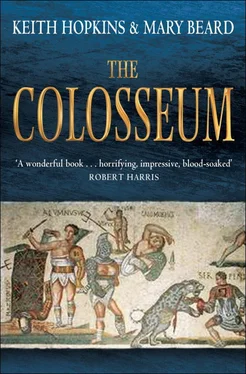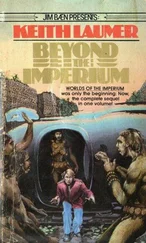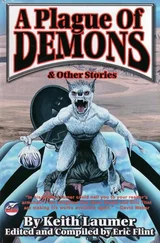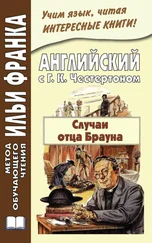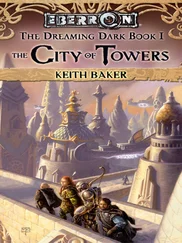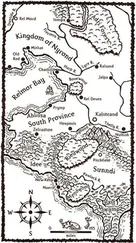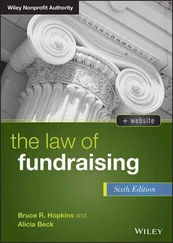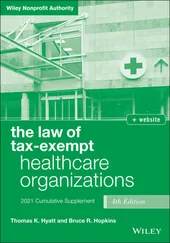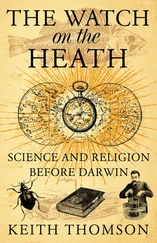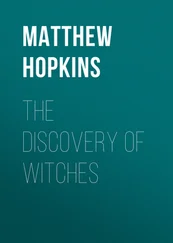Keith Hopkins - The Colosseum
Здесь есть возможность читать онлайн «Keith Hopkins - The Colosseum» весь текст электронной книги совершенно бесплатно (целиком полную версию без сокращений). В некоторых случаях можно слушать аудио, скачать через торрент в формате fb2 и присутствует краткое содержание. Город: London, Год выпуска: 2011, ISBN: 2011, Издательство: Profile Books, Жанр: История, на английском языке. Описание произведения, (предисловие) а так же отзывы посетителей доступны на портале библиотеки ЛибКат.
- Название:The Colosseum
- Автор:
- Издательство:Profile Books
- Жанр:
- Год:2011
- Город:London
- ISBN:9781846684708
- Рейтинг книги:3 / 5. Голосов: 1
-
Избранное:Добавить в избранное
- Отзывы:
-
Ваша оценка:
- 60
- 1
- 2
- 3
- 4
- 5
The Colosseum: краткое содержание, описание и аннотация
Предлагаем к чтению аннотацию, описание, краткое содержание или предисловие (зависит от того, что написал сам автор книги «The Colosseum»). Если вы не нашли необходимую информацию о книге — напишите в комментариях, мы постараемся отыскать её.
The Colosseum — читать онлайн бесплатно полную книгу (весь текст) целиком
Ниже представлен текст книги, разбитый по страницам. Система сохранения места последней прочитанной страницы, позволяет с удобством читать онлайн бесплатно книгу «The Colosseum», без необходимости каждый раз заново искать на чём Вы остановились. Поставьте закладку, и сможете в любой момент перейти на страницу, на которой закончили чтение.
Интервал:
Закладка:
Amphitheatres in general are the subject of D. L-Bomgardner, The Story of the Roman Amphitheatre (London, 2000), and of an important book by K. Welch, The Roman Amphitheatre from its Origins to the Colosseum (Cambridge, 2005). The main work of reference on amphitheatres is the two-volume study by J.-C. Golvin, L’Amphithéâtre Romain: essai sur la théorisation de sa forme et de ses fonctions (Paris, 1988), but note that a printing error on Golvin’s definitive plan of the Colosseum reversed the points of the compass, marking south as north. This error has crept into later books (including Bomgardner’s), causing considerable confusion.
There has been an enormous amount of recent writing on gladiators and other forms of Roman spectacle (some, but not all, prompted by the movie Gladiator ). Particularly influential have been K. Hopkins’ chapter ‘Murderous Games’, in his Death and Renewal (Cambridge, 1983), and C. Barton, Sorrows of the Ancient Romans: the gladiator and the monster (Princeton, 1993). Good general surveys of the phenomenon include R. Auguet, Cruelty and Civilization: the Roman games (London, 1972); D. Kyle, Spectacles and Death in Ancient Rome (London, 1998); F. Meijer, The Gladiators: history’s most deadly sport (London, 2007); and T. Wiedemann, Emperors and Gladiators (London & New York, 1992). G. Ville, La Gladiature en occident des origines à la mort de Domitien (Rome, 1981) is a rigorously detailed account. Two exhibition catalogues provide useful illustration of the material evidence (including surviving gladiatorial armour): E. Köhne and C. Ewigleben (eds.), Gladiators and Caesars (London, 2000) and – a magnificently illustrated book, though only available in Italian – A. La Regina (ed.), Sangue e arena (Milan, 2001). M. M. Winkler (ed.), Gladiator: film and history (Malden, MA, & Oxford, 2004) is a lively collection of essays on modern popular representation of gladiators and the ancient context.
The Cambridge Illustrated History of the Roman World , edited by G. Woolf (Cambridge, 2003), is an excellent, up-to-the-minute introduction to the historical and cultural background of the Colosseum. The best on-site guide to the ancient monuments of the city of Rome is A. Claridge, Rome: an Oxford archaeological guide (2nd ed., Oxford, 2010).
ANCIENT TEXTS
The main ancient texts which underpin our account of gladiatorial shows and the world of the Colosseum are:
Cassius Dio, Roman History (a narrative – now surviving only in parts – written in Greek in the third century AD, covering Rome’s history from its foundation to the writer’s own lifetime)
Martial, The Book of the Shows (or On Spectacles , as it is often called, a collection of poetry written to celebrate the opening of the Colosseum in AD 80)
Pliny (the Elder), Natural History (a vast encyclopaedia of the natural world, written in the mid first century AD)
‘Scriptores Historiae Augustae’ (a mysterious – and often unbelievably lurid – collection of lives of emperors and usurpers from Hadrian to the end of the third century AD, probably written at the end of the fourth; usually abbreviated as SHA)
Suetonius, Lives of the Caesars (a series of twelve biographies of Roman dictators and emperors from Julius Caesar to Domitian, written in the early second century AD)
Tacitus, Annals (an account of Roman history from the death of the first emperor Augustus probably – though the end does not survive – to the death of Nero, written in the early second century AD)
Translations of all these – and most other classical writers we have referred to – are available in the Loeb Classical Library. Reliable English versions of Suetonius and Tacitus (and of portions of Dio, Pliny and SHA) are also to be found in the Penguin Classics series. A selection of Martial’s verses from The Book of the Shows is included in the Penguin Classics volume Martial in English (eds. J. P. Sullivan and A. J. Boyle).
CHAPTER 1
Nineteenth-century tourism to Rome, as well as literary and artistic responses, are acutely discussed in C. Edwards (ed.), Roman Presences: receptions of Rome in European culture, 1789–1945 (Cambridge, 1999); the chapters by C. Chard and J. Lyon are especially relevant. The appeal of the mid-nineteenth-century Colosseum is captured by C. Woodward, In Ruins (London, 2001), Chapter 1, ‘Who Killed Daisy Miller?’, and (with an American focus) W. L. Vance, America’s Rome (New Haven & London, 1989), Volume 1, Chapter 2 (‘The Colosseum: ambiguities of empire’). Amongst an enormous bibliography which explores more generally the northern European engagement with Italy and the Mediterranean, note J. Pemble, The Mediterranean Passion: Victorians and Edwardians in the South (Oxford, 1987); M. Liversidge and C. Edwards, Imagining Rome: British artists and Rome in the nineteenth century (London, 1996); and C. Hornsby (ed.), The Impact of Italy: the Grand Tour and beyond (London, British School at Rome, 2000).
In addition to the literary references sourced in the text, Charles Dickens’ effusion on the Colosseum is from his Pictures from Italy (London, 1846) and Byron’s famous lines in Childe Harold’s Pilgrimage are from Canto IV.
CHAPTER 2
The Colosseum’s ancient literary fame depends heavily on Martial’s poems in The Book of the Shows , discussed by W. Fitzgerald in Martial: the wonder of the epigram (Chicago, 2007) and the subject of a definitive commentary by K. Coleman, Martial: Liber Spectaculorum (Oxford, 2006). The reactions of the emperor Constantius to the city can be found in Book 16 of Ammianus’ multi-volume history of Rome (translated in the Loeb Classical Library and Penguin Classics). The archaeological impact of the building is straightforwardly reviewed in Bomgardner’s Story of the Roman Amphitheatre. The description of El Jem as a ‘shrunken Colosseum’ is from an architectural study by M. Wilson-Jones, ‘Designing amphitheatres’, in Mitteilungen des Deutschen Archaelogischen Instituts (Römische Abteilung) , 100 (1993). Amphitheatres in Britain include a newly discovered example in London, which is explored in N. Bateman, Gladiators at the Guildhall: the story of London’s Roman amphitheatre and medieval Guildhall (London, 2002).
The story of the Golden House and the end of Nero’s reign are covered in two good biographies of Nero: M. Griffin, Nero: the end of a dynasty (London, 1984), and E. Champlin, Nero (Cambridge, MA, & London, 2003). The main Roman account of the rise of Vespasian is in Tacitus’ Histories (covering a later period than his Annals ); the Talmudic story of the flea is in Masechet Gittin (56b–57a). The triumphal procession of Vespasian and Titus is described in Book 7 of Josephus’ Jewish War and is the subject of M. Beard, ‘The Triumph of Flavius Josephus’, in A. J. Boyle and W. J. Dominik (eds.), Flavian Rome: culture, image, text (Leiden & Boston, 2003). The Colossus is discussed in S. Carey, Pliny’s Catalogue of Culture: art and empire in the Natural History (Oxford, 2003). The squib about Veii is reported in Suetonius’ Life of Nero . The full technical study of the dedicatory inscription is in German by G. Alföldy, in Zeitschrift für Papyrologie und Epigraphik , 109 (1995). The ‘Bede’ quotation is from a miscellany known as the Collectanea , edited and translated by M. Bayless, M. Lapidge et al. (Dublin, 1988); attributed to him in the sixteenth century, it is almost certainly nothing to do with Bede at all – though it is nevertheless probably of early medieval date.
Читать дальшеИнтервал:
Закладка:
Похожие книги на «The Colosseum»
Представляем Вашему вниманию похожие книги на «The Colosseum» списком для выбора. Мы отобрали схожую по названию и смыслу литературу в надежде предоставить читателям больше вариантов отыскать новые, интересные, ещё непрочитанные произведения.
Обсуждение, отзывы о книге «The Colosseum» и просто собственные мнения читателей. Оставьте ваши комментарии, напишите, что Вы думаете о произведении, его смысле или главных героях. Укажите что конкретно понравилось, а что нет, и почему Вы так считаете.
